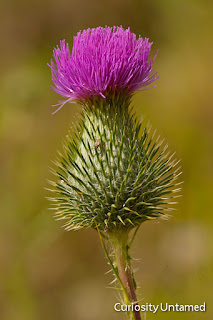No, this is not a philosophical blog post on the meaning of a life but a challenge to name an unidentified creature. Found at the start of Lady Carrington Drive in Royal National Park on an owl spotting expedition. We came across what looks like a small mouse when traipsing in the dark alongside the creek. The little creature was on a branch when we first spotted it. It played around on the branches whilst we took a bit of video footage and then nimbly ran down the tree and hopped off towards the river into the night. The poor quality image is captured from the video footage. The characteristics that we observed included:
- Body size between 5 - 10 cm
- White belly
- Grey fur on top
- Tail appeared shorter than overall body length, black near end
- Black eyes
- Pointy and pink nose
- Dominant ears with white fur on inside
Update February, 2012 - a response from Fiona Brell, Australian Museum
Our creature is a young Brown Antechinus. Thanks, Fiona!
Our creature is a young Brown Antechinus. Thanks, Fiona!
Dear Catherine,
Thank you for your enquiry. Your image shows a young Brown Antechinus, Antechinus stuartii. It is a native predatory marsupial mouse, a distant relative of the Tasmanian Devil. The fact that your animal had a short tail is probably due to an accident as the tail length is normally almost equal in length to the body.
More information about this species can be found at the following website:
http://australianmuseum.net.au/Brown-AntechinusPlease let us know if we can be of any further assistance.
Kind regards,
Fiona Brell
Interpretive Officer

















